This article was medically reviewed by Janice Litza, MD. Dr. Litza is a board certified Family Medicine Physician in Wisconsin. She is a practicing Physician and taught as a Clinical Professor for 13 years, after receiving her MD from the University of Wisconsin-Madison School of Medicine and Public Health in 1998.
There are 10 references cited in this article, which can be found at the bottom of the page.
This article has been viewed 52,827 times.
Transferring a patient from a bed to a chair or a stretcher can be a challenge, as you will need to support them properly to move them. Patients who cannot walk or put weight on their legs will need to be transferred regularly at home and in a hospital setting. As a caretaker, you will need to transfer your patients correctly so they are not at risk of being dropped or injured further. Learning the correct techniques will make this a safe and routine process for you and the person you are caring for.
Steps
Preparing for the Transfer
-
1Wash your hands with antibacterial soap and water. Lather your hands with the soap and wash them for 40-60 seconds so they are clean. This will ensure you are touching the patient with clean hands and are not exposing them to any germs.[1]
-
2Tell the patient you are transferring them. Explain the steps you are going to take to transfer them to a chair or a stretcher. Be clear about each step and how you are going to move them or support them. This will prepare them for the move so they are not caught off guard.[2]
- For example, you may say, “I am going to transfer you to this chair, supporting you with my arms,” or “My assistant and I are going to move you to this stretcher, supporting you with a slide board so the transfer is smooth.”
Advertisement -
3Identify the patient’s dominant side. Hold the patient’s hands, placing 1 hand in each of their hands. Ask the patient to squeeze your hands as hard as they can. Notice if 1 side feels stronger in your hands.[3]
- You can also test their feet by gripping each of their feet between your hands. Ask the patient to press down on your hands like they are pressing the accelerator of a car. Notice which side feels stronger in your hands.
-
4Check that the transfer area is free of any obstructions or slipping hazards. Look around the transfer area for any loose cords or tubes and adjust these items so they are not in your way. You want to have your feet firmly planted on the ground in the transfer area so you are not at risk of slipping or losing your footing.[4]
- You should be wearing non-slip shoes to ensure you have a solid grip on the floor.
- If you are transferring a patient from a bed, check that the wheels on the bed are in the locked position so it does not move or shift when you transfer the patient.
- If you are transferring a patient in their home, move any area or throw rugs that could cause you to trip.
Lifting a Patient into a Chair
-
1Place the chair next to the patient’s bed on their dominant side. Make sure the chair is within arm’s reach of you so you can get to it easily. If you are using a wheelchair, make sure the wheels are locked and swing away the foot rests at the bottom of the chair so the patient can slide into it easily.[5]
- Putting the chair on the patient’s dominant side will help you move them more easily, as they will be able to put more strength into you as you transfer them.
- If there is an arm guard on the bed, lower it so it is not in the way.
-
2Use your hands to roll the patient onto the same side as the chair. Gently turn the patient so they are on their side, facing the chair. Ask them to keep their arms tucked into their chest or under their head so they feel supported.[6]
- Try to roll the patient as close to the edge of the bed as possible when you shift them onto their side.
-
3Swing the patient’s feet off the edge of the bed and move them into a sitting position. Place 1 arm under the patient’s shoulders and 1 arm behind their knees. Bend your knees as you swing the patient’s feet off the edge of the bed. Shift your weight to your back foot and gently ease them into an upright sitting position, facing you.[7]
-
4Lower the bed using the bed controls. Shift the patient to the edge of the bed and lower the bed so their feet are touching the ground. Make sure you support the patient’s upper body with your arm as you lower the bed to ensure they do not fall forward.[8]
-
5Put a gait belt on the patient if they cannot stay upright on their own. If the patient has suffered a stroke or other issues that affects their motor functions, attach a gait belt around their waist. The gait belt will also give you a better grip during the transfer so the patient does not fall out of your arms. Wrap the belt around the patient’s waist so it is snug, but not too tight. Tuck any extra fabric at the end of the belt into the belt so it is not a tripping hazard.
- Do not use the gait belt as a handle or a way to pick up the patient. It’s purpose is to create friction when you lift the patient so they do not fall.
-
6Lock your hands behind the patient or at the gait belt. Stand as close as possible to the patient and reach around their chest with your hands. Lock your hands together behind the patient, at their mid back. If they have a gait belt on, you can hold the gait belt between your hands and line up your arms with the belt to create friction.[9]
-
7Place the patient’s outside leg between your knees. The patient’s outside leg will be the leg furthest from the chair. Position their leg between your knees for support and bend your knees, keeping your back straight. Tell the patient you are going to count to 3, and on 3 you are going to stand up and lift them.[10]
- Make sure the patient keeps their hands by their sides so they can support themselves when you lift them. If the patient has strength in their legs, instruct the patient to support their weight with their legs as you transfer them.
-
8Stand and lift the patient, pivoting towards the chair. Count out loud, “1-2-3.” On “3,” slowly stand up, using your legs to lift the patient. As you lift the patient, ask them to push off the bed using their hands. Shift the patient towards the chair, making sure your back is aligned with your hips.[11]
-
9Lower the patient into the chair. Once the patient’s legs touch the seat of the chair, bend your knees and slowly lower them into the seat. Have the patient reach for the armrests to support themselves as you lower them down.[12]
- If you are lowering them into a wheelchair, you can then reposition the feet guards and instruct the patient to put their feet in the guards so they are well supported in the chair.
- Confirm the move went well by asking the patient, “How do you feel?” or “Feeling okay in the chair?” If they answer “yes,” you can wheel them away in the chair or let them sit in the chair on their own.
Completing a Pivot Transfer In and Out of a Chair
-
1Park the wheelchair next to the bed. If your patient can stand and bear some weight, they can do a pivot transfer. Explain to your patient that you are going to move from the bed to the chair, or from the chair to the bed, as the case may be.[13]
- Angle the wheelchair 30-45 degrees from the side of the bed.
- Make sure the bed is lowered so that it is level with the chair.
- Put the brakes of the wheelchair on.
- Move the footrests out of the way.
-
2Help your patient sit up from the bed. If your patient is moving from the bed into a chair, have them sit up. Ask your patient to roll onto their dominant side, facing you, as close to the edge of the bed as they can get.[14]
- Put a hand behind their shoulders so that it supports their neck and top vertebrae of their back.
- Instruct the patient to push up on their elbows and hold the side rails. Keep your hand on their back so you support their neck and shoulders. Do not let the patient put an arm over your shoulders.
- Shift your weight slowly from the foot nearest them to the back foot, while you grasp their outer thighs and assist them in swinging their legs slowly over the side of the bed.
- Lifting with your thighs, slowly raise the patient to a sitting position. Ask your patient to push down on the bed with the arm that is against it. If they are stronger, let them push themselves up.
- Observe your patient as they sit. If they seem dizzy or start tilting, steady them and let them sit unassisted again.
-
3Help your patient stand up. If your patient is not dizzy or tilting, help them complete a pivot transfer. Put a gait/transfer belt on them. Help them scoot so that their bottom is at the edge of the seat or bed. Check that both feet are firmly on the floor.[15]
- Instruct your patient to push up with their hands, leaning forward over their feet. They can then swing their bottom onto the bed and sit down.
- Make sure to keep a hold on the gait belt to prevent your patient from falling.
- Offer words of encouragement as you go if the patient is new to this. You might say, "Nice and slow. Both feet on the floor. Great work."
- If your patient is pivoting from a bed into a chair, have them put their hands on the armrests and lower themself down.
Moving a Patient to a Stretcher
-
1Get 1 person to assist you. You will need another person to help you support and lift the patient onto the stretcher. Ask a peer, friend, or family member to assist you. Have them stand on the opposite side of the bed so they can support the patient on the side opposite from you.[16]
-
2Line up the stretcher with the patient’s bed. Make sure the top of the stretcher lines up with the top of the patient’s bed. Check that the stretcher’s wheels are locked and that the patient’s bed’s wheels are locked as well. Then, raise the height of the patient’s bed so it is 1 to 2 inches (25 to 51 mm) higher than the stretcher.[17]
- If the head of the bed is raised, lower it so it sits flat.
-
3Shift the patient to the edge of the bed and roll them away from you. If the patient can move on their own, ask them to shift to the edge of the bed. If they cannot move on their own, you may need to shift them using your hands and your assistant’s help. Guide the patient onto their side, facing away from you. Have the patient bend their legs and keep their arms across their chest as they lay on their side.[18]
-
4Lower the guard on 1 side of the bed and place the slide board under the patient. Make sure the slide board sits under the bottom sheet so the sheet and the patient are both supported by the board. Form a bridge between the bed and the stretcher with the slide board, positioning it so it sits halfway under the patient and halfway out onto the stretcher.[19]
- Adjust the bottom sheet so it sits over the slide board.
- Make sure the area around the stretcher is free of any cords, wires, or tubes so you are not at risk of tripping.
-
5Roll the patient onto their back so they are supported by the slide board. Ask your assistant to help you by rolling the patient away from them, onto the slide board. Make sure their back is firmly on the bottom sheet and the slide board so they are well supported.[20]
- Check that the patient’s knees are still bent and their arms are still firmly across their chest.
-
6Slide the patient onto the stretcher with the help of your assistant. Tell the patient that you are going to slide them on the count of 3. Have the assistant lower the guard-rail on their side of the bed. Then, count out loud to “3.” On “3,” slide the patient across the slide board, onto the stretcher. Your assistant should slide the patient over on their side of the bed.[21]
- Check that you and your assistant have a good grip on the bottom sheet and the slide board when sliding the patient.
- It may be necessary for the assistant to get onto the bed to slide the patient over. Make sure they position themselves on their knees on the bed, not on the slide board, to move the patient safely.
-
7Remove the slide board and position the patient comfortably on the stretcher. Once the patient is on the stretcher, roll them over to their side so they are facing you and remove the slide board. Leave the slide board on their bed. Roll the patient onto their back and slide a pillow under their head so they can rest comfortably on the stretcher. Adjust the bottom sheet so it lays flat on the stretcher.[22]
- Raise the guards up on the stretcher so the patient is supported.
- Ask them if they are feeling okay on the stretcher to ensure they are comfortable. You may ask, “How do you feel?” or “Feeling okay on the stretcher?” If they answer “yes,” you are good to roll them away on the stretcher.
References
- ↑ https://www.youtube.com/watch?v=cQhqF9sdRGQ&feature=youtu.be&t=15
- ↑ https://opentextbc.ca/clinicalskills/chapter/3-7-transfers-and-ambulation/
- ↑ https://www.youtube.com/watch?v=cQhqF9sdRGQ&feature=youtu.be&t=79
- ↑ https://www.youtube.com/watch?v=cQhqF9sdRGQ&feature=youtu.be&t=41
- ↑ https://www.ncbi.nlm.nih.gov/books/NBK564305/
- ↑ https://www.mountnittany.org/wellness-article/moving-patients-from-bed-to-wheelchair-staff-ed
- ↑ https://medlineplus.gov/ency/patientinstructions/000428.htm
- ↑ https://medlineplus.gov/ency/patientinstructions/000428.htm
- ↑ https://medlineplus.gov/ency/patientinstructions/000428.htm
- ↑ https://medlineplus.gov/ency/patientinstructions/000428.htm
- ↑ https://www.mountnittany.org/wellness-article/moving-patients-from-bed-to-wheelchair-staff-ed
- ↑ https://www.mountnittany.org/wellness-article/moving-patients-from-bed-to-wheelchair-staff-ed
- ↑ http://www.myshepherdconnection.org/sci/transfers/pivot-bed
- ↑ https://fairviewmnhs.org/patient-education/40382
- ↑ http://www.myshepherdconnection.org/sci/transfers/pivot-bed
- ↑ https://www.youtube.com/watch?v=cQhqF9sdRGQ&feature=youtu.be&t=412
- ↑ https://www.ncbi.nlm.nih.gov/books/NBK564305/
- ↑ https://www.ncbi.nlm.nih.gov/books/NBK564305/
- ↑ https://www.ncbi.nlm.nih.gov/books/NBK564305/
- ↑ https://opentextbc.ca/clinicalskills/chapter/3-7-transfers-and-ambulation/
- ↑ https://opentextbc.ca/clinicalskills/chapter/3-7-transfers-and-ambulation/
- ↑ https://opentextbc.ca/clinicalskills/chapter/3-7-transfers-and-ambulation/

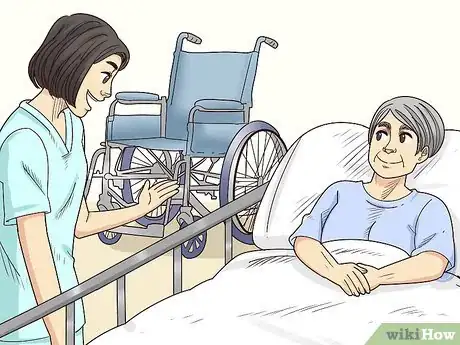
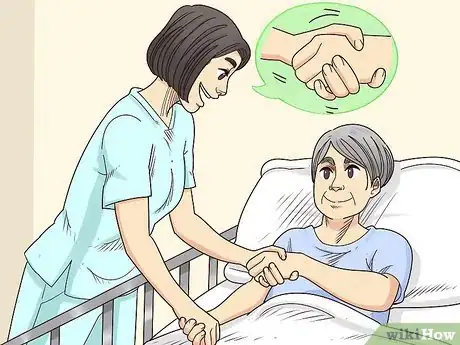


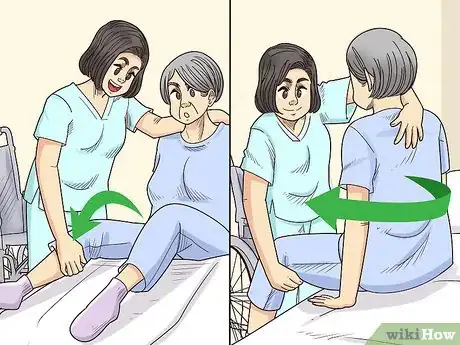
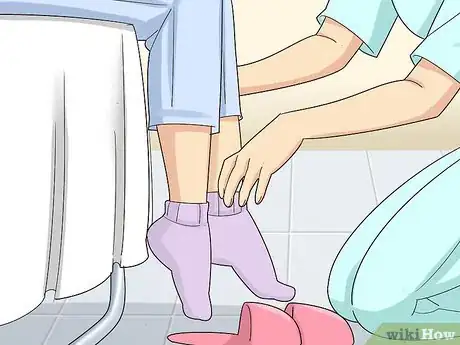
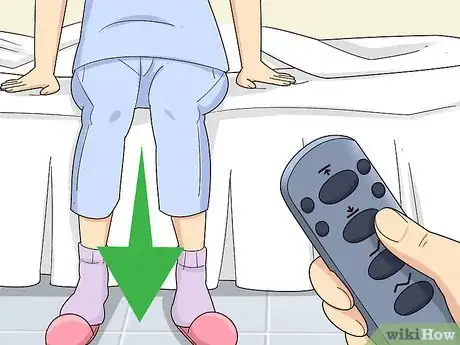
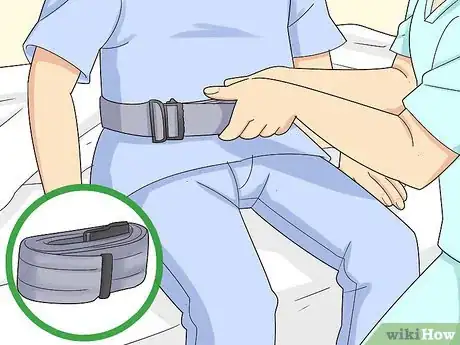
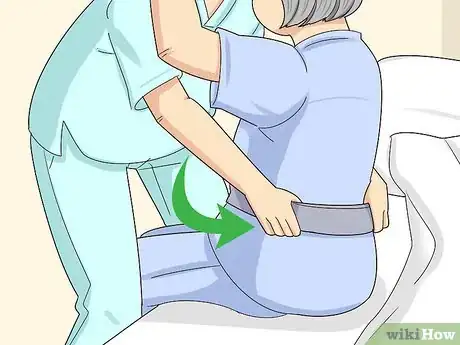
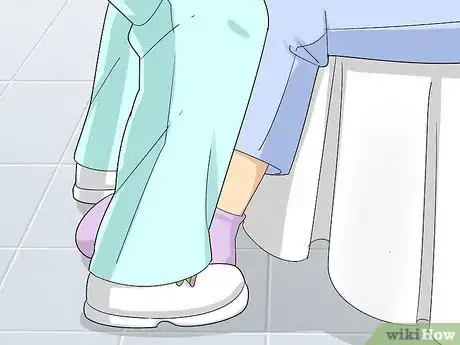
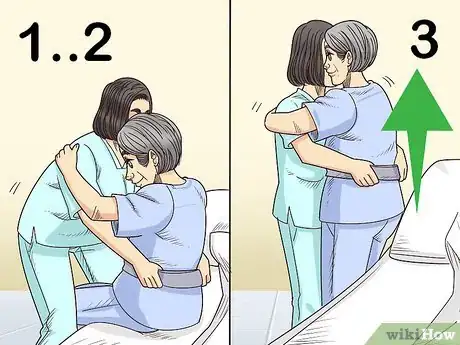
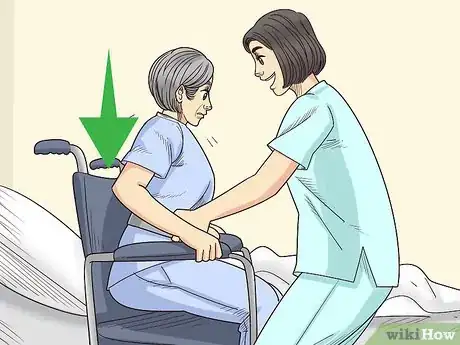
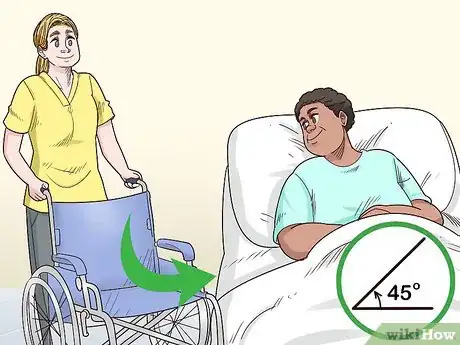

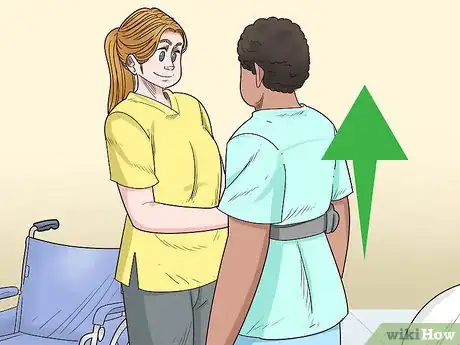



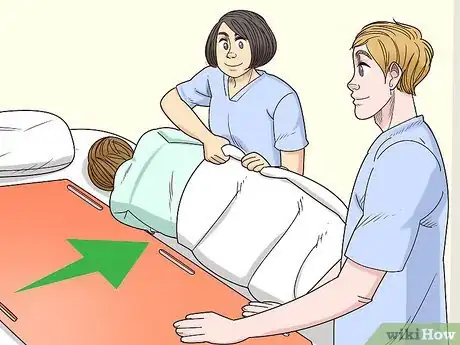
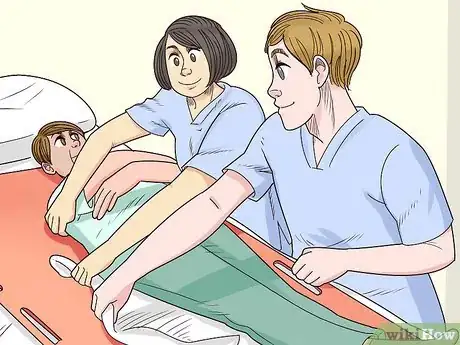
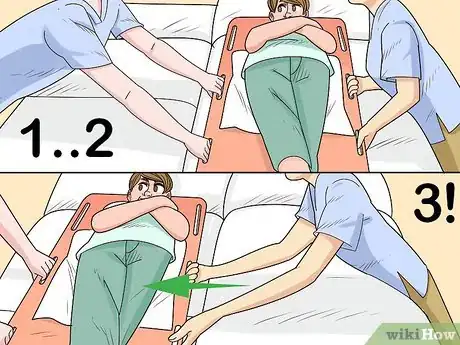
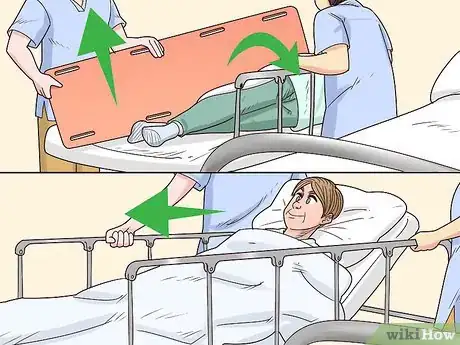


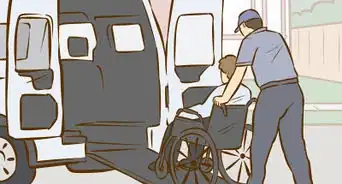













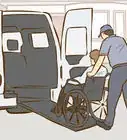




































Medical Disclaimer
The content of this article is not intended to be a substitute for professional medical advice, examination, diagnosis, or treatment. You should always contact your doctor or other qualified healthcare professional before starting, changing, or stopping any kind of health treatment.
Read More...